Just In
- 53 min ago

- 1 hr ago

- 5 hrs ago

- 6 hrs ago

Don't Miss
- Finance
 3 Free Shares, Rs 4/Share Dividend: Pharma Stock Rallies On Bonus Share, Dividend Proposal
3 Free Shares, Rs 4/Share Dividend: Pharma Stock Rallies On Bonus Share, Dividend Proposal - Movies
 Rohit Saraf, Pashmina Roshan Starrer Ishq Vishk Rebound Delayed Again Despite Being Fully Ready
Rohit Saraf, Pashmina Roshan Starrer Ishq Vishk Rebound Delayed Again Despite Being Fully Ready - News
 Goa's Railway Renaissance: BJP's Vision Transforms Connectivity
Goa's Railway Renaissance: BJP's Vision Transforms Connectivity - Sports
 IPL 2024: 'MI players have not bought into Hardik Pandya as the captain', Ex-India player makes shocking claims
IPL 2024: 'MI players have not bought into Hardik Pandya as the captain', Ex-India player makes shocking claims - Education
 Meet Naima Khatoon, First Vice Chancellor of AMU, Know Her Background and Education Qualification
Meet Naima Khatoon, First Vice Chancellor of AMU, Know Her Background and Education Qualification - Technology
 Xiaomi Robot Vacuum Cleaner S10, Handheld Garment Steamer, and Redmi Buds 5A Launched in India
Xiaomi Robot Vacuum Cleaner S10, Handheld Garment Steamer, and Redmi Buds 5A Launched in India - Automobiles
 Nissan Magnite Achieves 1 Lakh Unit Sales Milestone: Consistency Helps
Nissan Magnite Achieves 1 Lakh Unit Sales Milestone: Consistency Helps - Travel
Kurnool's Hidden Gems: A Guide To Exploring India's Lesser-Known Treasures
Beta-thalassemia: Causes, Symptoms, Risk Factors, Treatment and Prevention
Thalassemia is a group of inherited blood disorders that has a similar characteristic: defective and reduced production of haemoglobin, the iron-containing protein in red blood cells that helps in carrying oxygen throughout the body.
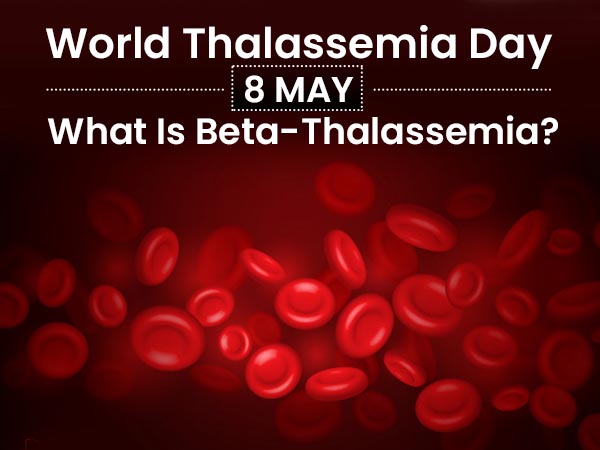
Beta-thalassemia (BT) is one of the types of thalassemia characterised by missing or mutated beta-globin chains resulting in decreased production of normal haemoglobin. Abnormality or mutation in haemoglobin leads to lack of oxygen in the body causing diseases like anaemia.
Beta-thalassemia is derived from a Greek word "thalassa" which means "the sea". It is named so because the disease was first found in people who resided near the Mediterranean Sea. Later, the disease also got prevalent in Asia, Africa and the Middle East.
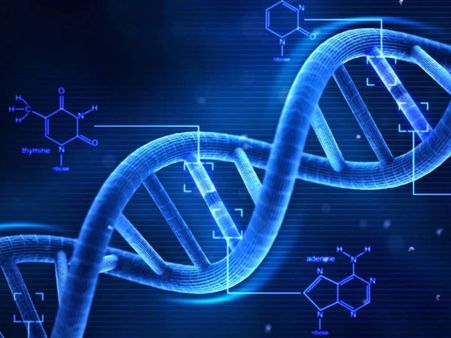
Causes Of Beta-thalassemia
As aforementioned, haemoglobin is involved in the production of red blood cells (RBCs)and carries oxygen to the cells of the entire body. It has four protein sections out of which two sections or subunits are identical and called alpha-globin. The other two are also identical to each other but different from alpha-globin and called beta-globin. They both have a tendency to get mutated. [1]
The HBB gene is a gene that provides instruction to make beta-globin. Mutation in this gene type is responsible for the reduced production of beta-globin and thus, reduced production of haemoglobin. In some cases, there is an absence of the beta-globin gene in the haemoglobin which also results in low haemoglobin count.
When there is low production of beta-globin in the body, the alpha-globin gets excess and forms insoluble aggregates in the RBCs, causing the death of the blood cells and leading to severe anaemia. This leads to BT.

Forms Of Beta-thalassemia
In BT, two genes are involved and a person gets both the genes from each parent. There are two main forms of BT: beta-thalassemia major (BTMa) and beta-thalassemia minor (BTMi). [2]
- BTMa: When a person receives a mutated or damaged gene from both the parents, the condition is called BTMa. Here, both the beta-globin gene will be defective. BTMa causes moderate to severe symptoms and is also known as Cooley's anaemia.
- BTMi: When a person receives a single mutated or damaged gene from either of the parents, the condition is called BTMi. Here, one beta gene will be defective but the other will work normally. BTMi causes only mild symptoms.
Note: Babies born with two BTMa are usually healthy at the time of birth. Symptoms start showing within the two years after birth.

Symptoms Of Beta-thalassemia
- Extreme fatigue
- Slow growth and development
- Pale or yellowish skin
- Dark urine
- Face bone deformities
- Chest pain, leg cramps
- Poor feeding
- Rapid heartbeat
- Breath shortness
- Dizziness and headaches
- Recurrent fevers

Risk Factors Of Beta-thalassemia

- Family history [3]
- Ancestry who belonged to the Mediterranean countries,who are African Americans or are Southeast Asian descents.

Complications Of Beta-thalassemia
It includes:
- Enlargement of the spleen: When the spleen becomes overactive and works harden to filter old and damaged cells caused by BT. This leads to spleen enlargement.
- Iron overload: Caused due to BT or frequent blood transfusion. Excessive iron causes harm to the heart, liver and endocrine system. [4]
- Infection: It is caused when the overactive spleen leads to anaemia causing low levels of white blood cells and platelets.
- Bone deformities: It is caused when the bone marrow expands to compensate for chronic anaemia caused due to BT. The expansion causes abnormality in the bone structure due to the formation of thin, brittle and wider bone.
- Heart failure: Iron overload causes inflammation in the linings of the heart and damaging their tissues leading to conditions like abnormal heart rhythms, enlargement of the heart and even heart failure. [5]
- Delay in sexual maturation: Caused due to iron overload in the body.
- Other conditions such as hypothyroidism, diabetes mellitus, liver cirrhosis and hypertension, leg ulcers and osteoporosis.
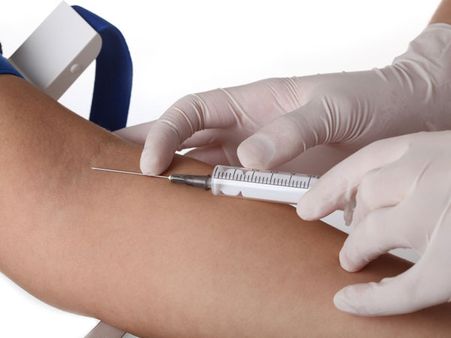
Diagnosis Of Beta-thalassemia
Some diagnosis is carried out during the prenatal period. They are:
- Chorionic villus sampling: Carried out during 11th week of pregnancy. Here, a tiny piece of placenta is taken and examined.
- Amniocentesis: Carried out during 16th week of pregnancy. Here, the sample of amniotic fluid is taken and examined.
- Blood tests: To find out abnormality in the haemoglobin. [6]
- Physical examination: Evaluating the severity of BT and viewing symptoms.
As the babies born with BT show symptoms within two years of their birth, they are diagnosed by the following methods:

Treatment Of Beta-thalassemia
People who have BTMi usually don't have any symptoms. But if a child is diagnosed with BTMa, first a genetic counsellor is appointed and then treatment methods are carried out depending on the age, health, severity of the child. Common treatment methods are:
- Frequent blood transfusion: To compensate for the lower amount of RBCs in the body.
- Bone marrow transplant: A stem cell transplant from the compatible donor to the child.
- Iron chelation therapy: For removal of excess of iron from the body caused due to frequent blood transfusions.
- Surgery: To correct bone deformities.
- Folic acid supplements: To boost the production of RBCs.
- Gene therapy: A process in which the mutated gene is replaced with a normal gene. [7]
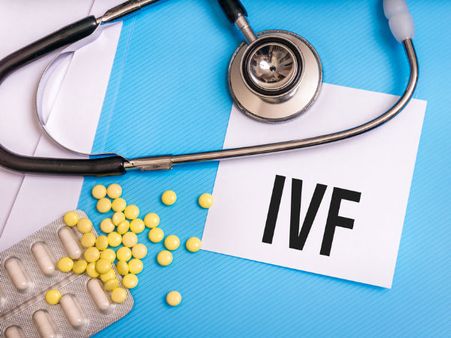
Is Beta-thalassemia Preventive?
BT is a genetic disorder which is why it is very hard to prevent it. However, there's an alternative reproductive technology to prevent it. In this method, mature eggs from the mother and sperm from the father are fertilised in vitro. The embryo is evaluated at the early stage and those with no defective gene is planted in the uterus of the mother. This method is recommended to couples who are carriers of the BT gene. [8]

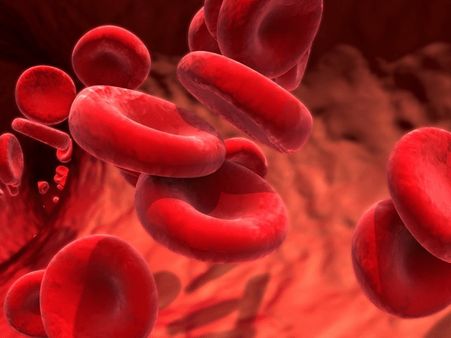
Common FAQs
1. What is the life expectancy of someone with thalassemia?
If diagnosed before pregnancy, chances of the survival of children become more by Vitro fertilisation process. If the child is born with BT, they also survive when treatment starts at an early stage. Genetic therapy and stem cell transplantation are effective methods to treat BT. These methods have proved to increase the life expectancy of people for many years. [9]
2. Is thalassemia a cancer?
No, it is a type of anaemia characterised by reduction of haemoglobin in the body.
3. Is beta-thalassemia dangerous?
Beta-thalassemia major often leads to chronic anaemia and can be life-threatening if not managed early. It is not as severe as sickle cell anaemia but it is considered dangerous.
-
 insyncBlue People of Kentucky: Blame This Rare Medical Condition As To Why Their Lives Are More Azure Than Smurfs
insyncBlue People of Kentucky: Blame This Rare Medical Condition As To Why Their Lives Are More Azure Than Smurfs -
 nutritionWhy Should You Consume Dates Soaked In Milk?
nutritionWhy Should You Consume Dates Soaked In Milk? -
 wellnessWorld Sickle Cell Day (19 June): What Is Cord Blood Banking? Know More About Its Pros And Cons
wellnessWorld Sickle Cell Day (19 June): What Is Cord Blood Banking? Know More About Its Pros And Cons -
 wellness7 Risks Associated With Iron Overload
wellness7 Risks Associated With Iron Overload -
 wellness17 Signs And Symptoms Of Iron Deficiency
wellness17 Signs And Symptoms Of Iron Deficiency -
 nutritionWays To Include Chicken Breast In Your Diet And Its Health Benefits
nutritionWays To Include Chicken Breast In Your Diet And Its Health Benefits -
 disorders cureMicrocytic Anemia: Symptoms, Causes, Risk Factors, Treatment, And Prevention
disorders cureMicrocytic Anemia: Symptoms, Causes, Risk Factors, Treatment, And Prevention -
 disorders cureMethemoglobinemia: Symptoms, Causes, Diagnosis And Treatment
disorders cureMethemoglobinemia: Symptoms, Causes, Diagnosis And Treatment -
 disorders cureCan Periods Lead To Anaemia? Who Is At Risk?
disorders cureCan Periods Lead To Anaemia? Who Is At Risk? -
 kidsSigns And Symptoms Of Anaemia In Children
kidsSigns And Symptoms Of Anaemia In Children -
 disorders cureAnaemia In Men: Possible Causes And Symptoms
disorders cureAnaemia In Men: Possible Causes And Symptoms -
 postnatalDoes Iron Deficiency Anaemia Affect Breastfeeding? Causes, Impacts, Risk Factors And Preventions
postnatalDoes Iron Deficiency Anaemia Affect Breastfeeding? Causes, Impacts, Risk Factors And Preventions


 Click it and Unblock the Notifications
Click it and Unblock the Notifications



